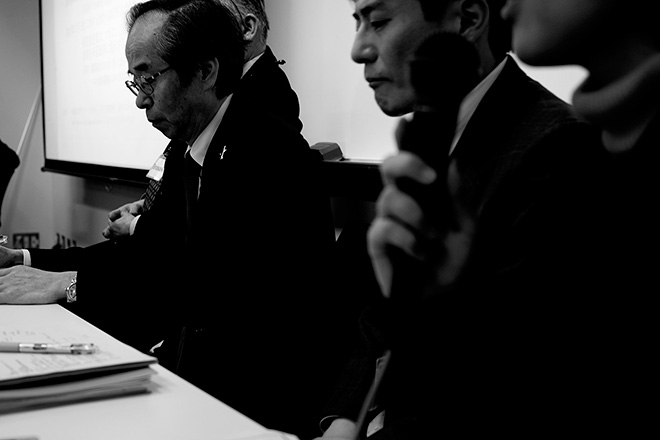Aviation
Shinji Suzuki / School of Engineering, the University of Tokyo

Q: Professor Suzuki, you’ve been involved in aircraft research for many years. Where does your passion for that research come from?
Suzuki: I’ve always loved airplanes for as long as I can remember. I was raised in Nagoya where the aviation industry is concentrated in the Chubu area, and when I was in elementary school, the YS-11 domestically produced passenger plane made its first flight. I was constantly enthralled with this type of news, and I genuinely loved airplanes.
When I went to college, I decided to specialize in aeronautical engineering, but then I read a documentary book titled “Fear of Mach [Mahha no Kyoufu]” by Kunio Yanagida about aircraft accidents. From that, I became aware that airplanes are not merely a target of adoration, but rather are an extremely important means of transportation that must be responsible for protecting people’s lives. That’s when I decided that I wanted to spend my life researching this field.
Q: Professor Suzuki, what is the major difference between the non-falling airplane that you are advocating and conventional airplanes and aircraft that have existed thus far?
Suzuki: The ultimate goal of my research is to “build a non-falling airplane”. Compared to other means of transportation, airplanes are in fact extremely safe from a statistical perspective.
Most of today’s airplanes can fly on autopilot, but when a problem occurs, the pilot has to step in and overcome the problem, and of course pilots are trained to do just that. However, when a pilot is subjected to a problem that he or she has never before encountered, the pilot has to determine right then what should be done to save the plane.
It is for situations like this that I’ve wondered if in addition to the pilot, can the capabilities of computers, or in other words, artificial intelligence also be used to save the plane. That is the backbone of my research into non-falling airplanes.

Q: In research relating to airplane safety, in what areas does Japan lead the rest of the world?
Suzuki: Japan has the unfortunate history of the massive aircraft accident near Mount Osutaka. At the time of that accident, I was actually working at a research center for an automotive company, but when I heard the news, I felt strongly that we still needed to make airplanes much safer, so I went back to the university, and now I’m researching aeronautical engineering.
Since then, there have in fact been no accidents in Japan of Japanese airliners that have resulted in fatalities. The Mount Osutaka accident significantly increased safety awareness in Japan, and safety is still being maintained in Japan. Moving forward, I want to expand the technologies that are being produced from that spirit of safety to the rest of the world as well.
Developments will soon be completed on the MRJ, the second domestically produced aircraft since the YS-11 that I mentioned earlier. The MRJ features technology that is designed to maintain safety using Japan’s extremely sophisticated manufacturing capabilities and detailed service, and in a certain sense, I believe that it is Japan’s mission to provide this technology and safety-focused mindset to the rest of the world.
Q: Why do you think that aviation is so important in the University of Tokyo’s Global Leadership Education Program? How are you attracting students to the program, and how do you want these students to change, and through what type of education?
Suzuki: I’m conducting educational research in the area of engineering systems. Airplanes cannot be developed with technology alone. We also have to develop and utilize various mechanisms and global systems to ensure safe flight. From there, we also have to develop mechanisms from an economic standpoint so that airlines can generate profits. Airplanes also have to offer a high level of convenience to the people who use them.
In that sense, this area pertains to various fields including policy development, economics, and technology, and this is true on a global perspective. Airplanes fly around the world, so they are a global matter, and even when airplanes are produced, a supply chain is now needed to procure parts from around the world.
Rules pertaining to aircraft also have to be formed with global agreements, so we have to develop global human resources who have a broad knowledge of all these areas. Therefore, this type of theme is appropriate for this leading graduate school program. I really want to work with young students by adopting this type of focus.

Q: You’re offering a course with Boeing. What types of information are you teaching students in that course?
Suzuki: Aviation requires a significant amount of global qualifications. Therefore, we formed a collaboration between Boeing, a major global aircraft manufacturer, and the University of Tokyo, and we’re discussing how to best foster global human resources in the engineering field and are working together to develop an educational program in the form of a Boeing externship.
More specifically, we’re providing an online course via the Internet that is taught directly by Boeing engineers and managers in Seattle, and the University of Tokyo is not the only university participating. Other universities in Japan are participating as well, and each of these universities is taking part in the coursework via the Internet and then holding discussions at their respective universities.
Last year, I was able to take some students with me to Seattle, and we were able to see first-hand what goes on at Boeing. I believe that we must develop human resources who can play an active role in the world through activities such as this.
